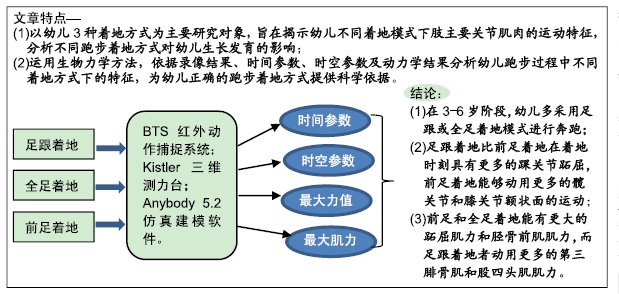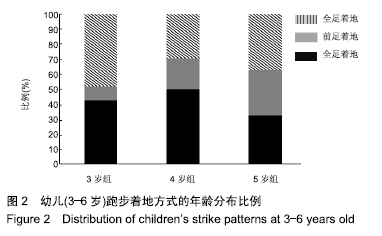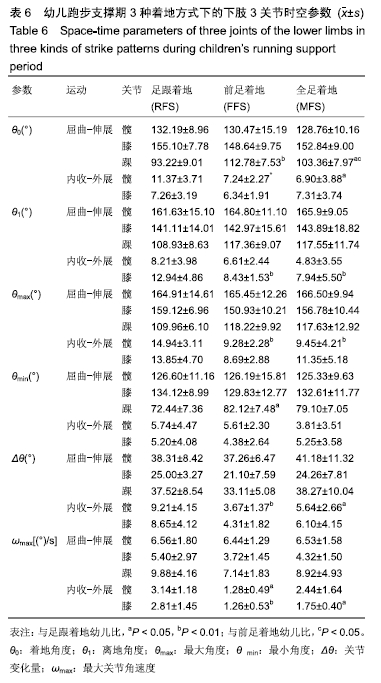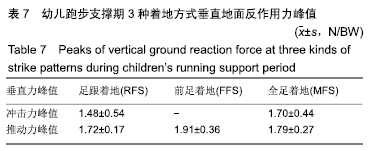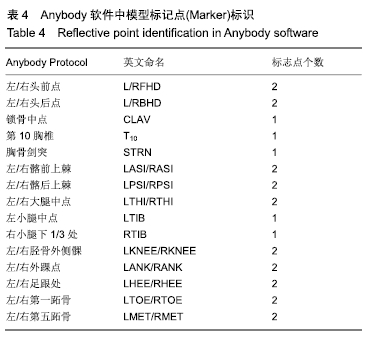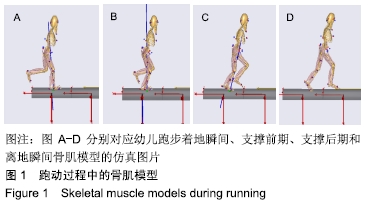[1] VAN MECHELEN W. Running injuries. A review of the epidemiological literature. Sports Med.1992; 14(5):320-335.
[2] 王爱文.基于人体仿真对不同跑步人群疲劳前后下肢动作生物力学模式的研究[D].北京:北京体育大学, 2018.
[3] HRELJAC A. Impact and overuse injuries in runners. Med Sci Sports Exerc.2004;36(5):845-849.
[4] HRELJAC A, MARSHALL RN, HUME PA. Evaluation of lower extremity overuse injury potential in runners. Med Sci Sports Exerc.2000;32(9):1635-1641.
[5] BOYER ER , DERRICK TR. Lower extremity joint loads in habitual rearfoot and mid/forefoot strike runners with normal and shortened stride lengths. J Sports Sci.2017;36(5):1-7.
[6] 高瞻乐,王纯.基于知识图谱分析跑步过程中的生物力学的变化与特征[J].中国组织工程研究,2018, 22(36):5879-5888.
[7] LIEBERMAN D. Foot strike patterns and collision forces in habitually barefoot versus shod runners. Nature.2010;463 (7280): 531-535.
[8] CAVANAGH PR, LAFORTUNE MA. Ground reaction forces in distance running. J Biomech.1980; 13(5):397-406.
[9] HASEGAWA H, YAMAUCHI T, KRAEMER WJ. Foot strike patterns of runners at the 15-km point during an elite-level half marathon. J Strength Cond Res.2007;21(3):888-893.
[10] MERCER JA, HORSCH S. Heel-toe running: A new look at the influence of foot strike pattern on impact force. J Exerc Sci Fit. 2015;13(1):29-34.
[11] DAOUD AI, GEISSLER GJ, WANG F, et al. Foot Strike and Injury Rates in Endurance Runners: A Retrospective Study. Med Sci Sports Exerc.2012; 44(7):1325-1334.
[12] YONG JR, SILDER A, DELP SL. Differences in muscle activity between natural forefoot and rearfoot strikers during running. J Biomech.2014;47(15):3593-3597.
[13] SHIH Y, LIN KL, SHIANG TY. Is the foot striking pattern more important than barefoot or shod conditions in running. Gait Postur. 2013;38(3):490-494.
[14] ZADPOOR AA, NIKOOYAN AA. Modeling muscle activity to study the effects of footwear on the impact forces and vibrations of the human body during running. J Biomech. 2010;43(2):186-193.
[15] NIGG BM. The Role of Impact Forces and Foot Pronation: A New Paradigm. Clin J Sport Med. 2001; 11(1):2-9.
[16] PAYNE G,耿培新,梁国立.人类动作发展概论[M].北京:人民教育出版社,2008.
[17] KRABAK BJ, SNITILY B, MILANI CJE. Understanding and Treating Running Injuries in the Youth Athlete. Curr Phys Med Rehabil Rep.2016; 4(2):1-9.
[18] CESAR GM, SIGWARD SM. Dynamic stability during running gait termination: Differences in strategies between children and adults to control forward momentum. Hum Movement Sci.2015;43: 138-145.
[19] ROMAN P ÁL, BALLBOA FR, PINILLOS FG. Foot strike pattern in children during shod-unshod running. Gait Posture. 2017; 58: 220-222.
[20] HOLLANDER K, VAN DER ZWAARD BC, DE VILLIERS JE, et al. The effects of being habitually barefoot on foot mechanics and motor performance in children and adolescents aged 6–18 years: study protocol for a multicenter cross-sectional study (Barefoot LIFE project). J Foot Ankle Res.2016;9(1):36.
[21] 刘述芝,胡志刚,张健,等. 冲击载荷作用下运动员下肢动态响应的逆向动力学仿真[J].医用生物力学, 2015,30(1):30-37.
[22] 王旸,牛文鑫,何艳,等.面向逆向动力学仿真驱动和验证的半蹲式跳伞着陆实验研究[J].医用生物力学,2010,25(4):260-261.
[23] DAMSGAARD M, RASMUSSEN J, CHRISTENSEN ST, et al. Analysis of musculoskeletal systems in the AnyBody Modeling System. Simul Model Pract Th. 2006;14(8): 1100-1111.
[24] WILLSON JD, RATCLIFF OM, MEARDON SA, et al. Influence of step length and landing pattern on patellofemoral joint kinetics during running. Scand J Med Sci Spor. 2015; 25(6):736-743.
[25] LIEBERMAN DE, VENKADESAN M, WERBEL WA, et al. Foot strike patterns and collision forces in habitually barefoot versus shod runners. Nature.2010;463(7280):531-535.
[26] 李静,梁国力.大肌肉群发展测试(TGMD-2)研究[J].中国体育科技,2005,41(2):105-107.
[27] 纪仲秋,赵盼超,姜桂萍,等.人体在向后滑倒时平衡调节能力的生物力学研究[J]. 北京师范大学学报(自然科学版),2018,54(2): 269-276.
[28] VALENZUELA KA, LUNN SK, MIKELSON LR, et al. Effect of Acute Alterations in Foot Strike Patterns during Running on Sagittal Plane Lower Limb Kinematics and Kinetics. J Sports Sci Med. 2015; 14(1):225-232.
[29] 马云茹.不同着地方式对跑步时下肢生物力学特征的影响[D].北京:北京体育大学,2016.
[30] PERL D P, DAOUD A I, LIEBERMAN DE. Effects of Footwear and Strike Type on Running Economy. Med Sci Sport Exerc. 2012;44(7):1335-1343.
[31] AHN A N, BRAYTON C, BHATIA T, et al. Muscle activity and kinematics of forefoot and rearfoot strike runners. J Sport Health Sci. 2014;3(2):102-112.
[32] KULMALA JP, AVELA J, PASANEN K, et al. Forefoot Strikers Exhibit Lower Running-Induced Knee Loading than Rearfoot Strikers. Med Sci Sport Exerc. 2013; 45(12):2306-2313.
[33] PERL DP, DAOUD AI, LIEBERMAN DE. Effects of footwear and strike type on running economy. Med Sci Sport Exerc. 2012;44(7):1335-1343.
[34] VALENZUELA KA, LYNN SK, MIKELSON LR, et al. Effect of Acute Alterations in Foot Strike Patterns during Running on Sagittal Plane Lower Limb Kinematics and Kinetics.J Sports Sci Med. 2015;14(1):225-232.
[35] SAMSON W, VAN HAMME A, DESROCHES G, et al. Biomechanical maturation of joint dynamics during early childhood: Updated conclusions. J Biomech. 2013;46(13): 2258-2263.
[36] 王昕越.幼儿行走动作发展特征的研究[D].北京:北京体育大学,2013.
[37] DALY RM, RICH PA, KLEIN R, et al. Effects of High-Impact Exercise on Ultrasonic and Biochemical Indices of Skeletal Status: A Prospective Study in Young Male Gymnasts. J Bone Miner Res.1999; 14(7):1222-1230.
[38] SAMAAN CD, RAINBOW MJ, DAVIS IS.Reduction in ground reaction force variables with instructed barefoot running. J Sport Health Sci.2014;3(2): 143-151.
[39] ROONEY BD. Joint contact loading in forefoot and rearfoot strike patterns during running. J Biomech. 2013;46(13): 2201-2206.
|
